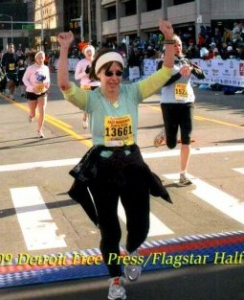| By Debra Kirby |
I am counting the days until the March release of A Wrinkle in Time, the movie based on Madeleine L’Engle’s award-winning novel. In anticipation of the movie, I decided to spend a little time revisiting the story by checking to see what Gale resources could provide. Like all forays into Gale products, once I began, there seemed no limit to what I was able to discover. If you’ve never read A Wrinkle in Time or read it long ago, check out the chapter by chapter summary from Novels for Students on GVRL.
Did you know that L’Engle received 26 rejections for A Wrinkle in Time before it was published in 1962? Or that it won a Newbury Medal in 1963? A visit to Madeleine L’Engle’s topic page in Biography In Context will provide an overview of L’Engle’s life and career. Plan to visit this page when you have some time; it contains many fascinating links, including magazine and news articles about L’Engle and her works and even the upcoming movie. You can also hear an interview with L’Engle’s granddaughter or an interview with astronaut Dr. Janice Voss on the occasion of Madeleine L’Engle’s death, where she talks about how reading A Wrinkle in Time as a young girl inspired her to become an astronaut.
Visit Literature Resource Center to read this 1982 essay by L’Engle, Childlike Wonder and the Truths of Science Fiction, which includes this observance: “The world of contemporary science, of astrophysics and cellular biology, is itself so fantastic and poetic that it almost seems like fiction. A star that is known as a degenerate white dwarf, or another known as the red giant sitting on the horizontal branch—they sound more as if they come from fairy tales rather than from serious books on astrophysics.”
Speaking of science and physics, what does it mean to “tesseract,” or travel through time? What scientific theories and facts support or disprove the possibility? Travel to Science In Context to find out. There you will find a topic page on Spacetime, a more targeted article on time travel, and information on wormholes, which is what current sci-fi writers might call L’Engle’s wrinkle in time. If you’re more of a visual learner, you’ll want to watch this NASA video, Einstein’s Cosmic Speed Limit. Before you leave Science In Context, check out this great Jan/Feb 2018 Smithsonian article, Girl Power: How a Wrinkle in Time Liberated Young Adult Literature.
Finish up your research by checking out the topic pages for A Wrinkle in Time movie director Ava DuVernay, and the actors playing Mrs. Who, Mrs. Which, and Mrs. Whatsit, Mindy Kaling, Oprah Winfrey, and Reese Witherspoon.
Finally, learn a little more about Storm Reid, the young actress who plays the main character Meg Murry in the film.
I’m now even more excited about seeing the March movie—too bad I can’t find a wormhole that will take me to March 9th right now!


